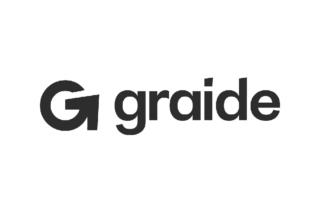What is Slate?

Audience – academic colleagues who deliver UG and PGT teaching.
Slate is a new course unit information management system, intended to replace the existing course unit information publishing system called CUIP. It was designed and developed in FSE by James Marsh and Steve Pettifer.
A key feature of Slate is that it has a much more comprehensive and rigorous schema (how the data is structured) for course unit information compared to CUIP. Slate captures explicitly the links between the intended learning outcomes, teaching and learning activities, and assessment components in detail. This helps keep the information in good order and makes alignment of the key aspects of teaching, learning and assessment much easier. It also allows elements of teaching and learning to be tagged to PSRB accreditation requirements and has recently been used in the School of Engineering as a platform for generating accreditation paperwork, leading to successful reaccreditation of the Civil Engineering programme portfolio.
Slate is “built in” to the university’s Microsoft environment and authenticates through the standard login system using your university credentials.
The information structure in Slate has seven categories:
- The Details section shows information such as credits, the FHEQ level and any pre- or co-requisite course units.
- The Aims section shows the academic focus of the unit, in terms of what you as an instructor intend.
- The Syllabus section describes the detailed content that you cover. This section is much more advanced that CUIP as it can also include equations and formulae, e.g., from LaTeX.
- The Intended Learning Outcomes (ILOs) list the things that students will be able to do on successful completion of your course unit in student-focussed terms. Slate allows a topic label to be assigned to each one to help with planning and alignment.
- The Teaching Activities section captures the methods that you will use to deliver the content in consistent terms, along with the time allocated to each in the overall study budget.
- The Assessments section records the nature and weighting of each of the individual components of assessment using standard terms. It also captures the alignment of each part of the assessments to specific ILOs.
The last section is the Reading List. Although this appears in the Slate record for your unit, the information is pulled directly from the university library’s reading list system.
There are several checks built into Slate that will help you maintain the accuracy of the information. For example, the FSE ILO checker is built in. A green tick against an ILO confirms that the ILO checker does not see any obvious problems with the ILO structure and, based on the verbs used, it also assigns the ILO to one or more cognitive categories based on Bloom’s taxonomy.
Slate also tracks the study budget of a course unit in terms of the hours associated with each activity, including assessment. Each activity is selected from a standard list, based on an augmented version of the university guidance. You can define the number of hours associated with that activity, which Slate then adds up for all components and ensures that the total is appropriate for the credits, based on the university standard of 10 credits = 100 hours.
Slate also keeps track of the assessment components, their weighting and alignment to the ILOs. The assessment section captures the description (chosen by you), the alignment to the ILOs (via the topic labels), the format of the assessment and finally the weighting. Also, where there are additional criteria such as AHEP4 for engineering programmes, these can also be tagged here.
Once the data is complete in Slate, there are several things that will become much easier. The first is quality control, since Slate automatically checks things such as the ILOs, study budget and assessments.
Slate will also provide much of the information needed for annual course unit review and the course unit specification change process. In future versions, we will also look at ways to publish course unit information to other systems such as Canvas, the new CLE which will roll out in 2025.
Slate will also provide a platform for much more advanced purposes. One of the current limitations of our course unit information system is that a lot of the information is hard to access and in a variety of formats. Collecting information in one place in a standard format will create new opportunities in curriculum analysis and programme development, particularly for cross-disciplinary developments and for flexible and blended learning.
So, if you have not already, please have a look at the Slate records for your course units. Slate can currently be found at:
https://www.slate.courses/units
There is a feedback link at the bottom of the Slate window that you can use to give is your opinions on Slate. Please let us know what you think.

